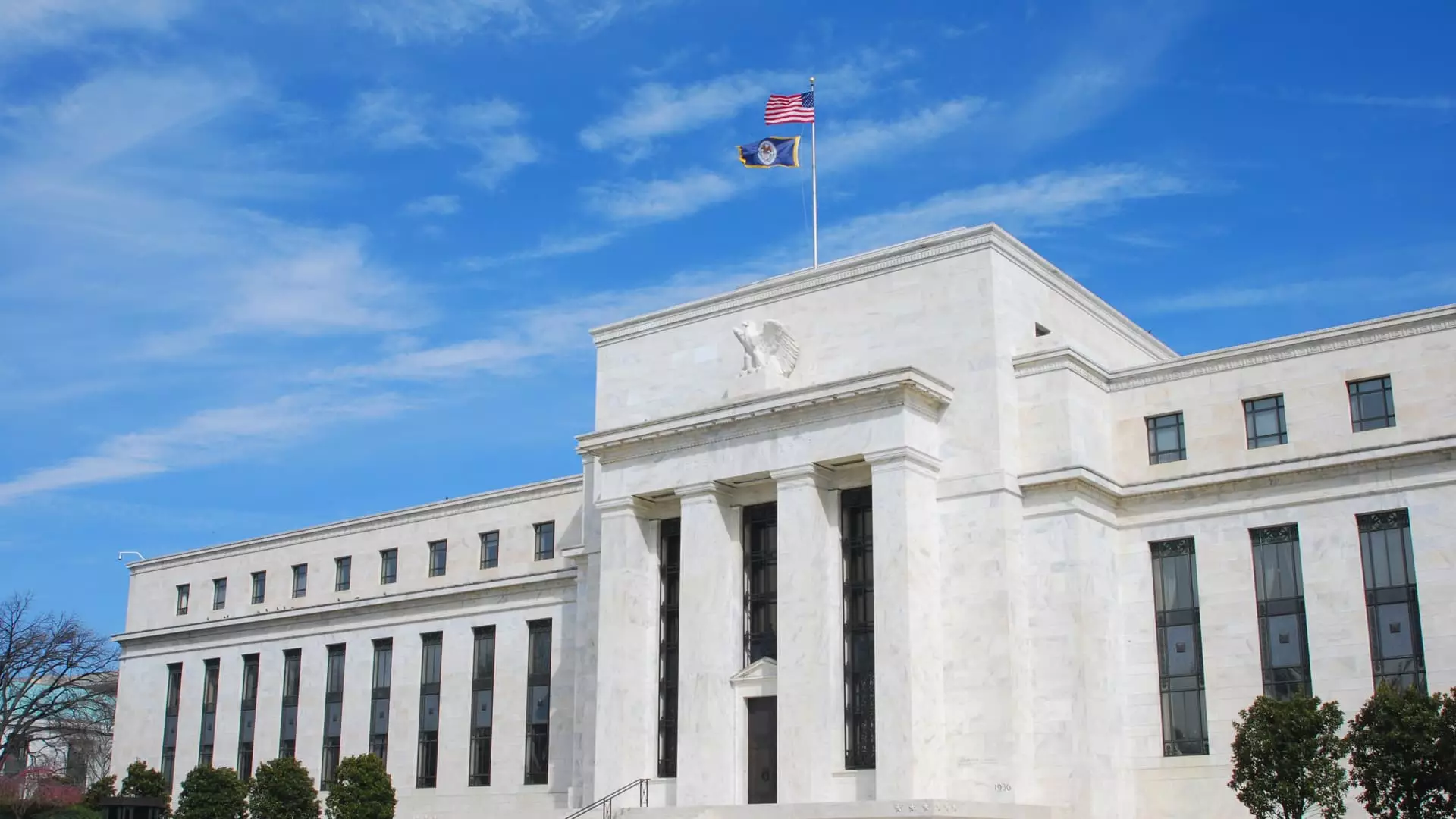The decision by the Federal Reserve to maintain interest rates can be viewed through multiple lenses, but the consensus leans towards a looming economic caution that should resonate with every individual consumer. The ripple effects of these decisions are profound, and the reality is that they may not unfold in the manner that either the Fed or average consumers anticipate. As we delve into this situation, it’s essential to understand the intricate balance between policy and everyday financial realities.
Interest Rates: A Double-Edged Sword
The Federal Reserve’s choice to keep interest rates steady is driven by recent, somewhat optimistic trends in inflation. However, we must remain diligent. Just when things seem to stabilize, an escalating trade war casts a long shadow over potential price increases looming ahead. The corrosive effects of tariffs on consumer goods cannot be understated. As Andrzej Skiba from RBC Global Asset Management clearly points out, we might just be at the precipice of a much larger inflationary wave. This means that any potential gains from fixed rates could quickly evaporate in the face of rising consumer costs.
From a center-right perspective, the excessive government involvement through tariffs and trade wars not only disrupts free-market principles but also adversely impacts the average American’s financial health. When consumers face rising prices for everyday goods due to unfavorable trade policies, the Fed’s decision to hold rates steady doesn’t provide solace; instead, it could exacerbate the financial strains on already stressed households.
The Reality of Consumer Debt
Despite the Fed’s steadiness, our reality as consumers is that the cost of borrowing remains prohibitively high. Although there have been some decreases in interest rates for mortgages, auto loans, and credit cards, the numbers are still troubling. For instance, the average rate for a long-term mortgage is now slightly lower than where it started the year, but it still sits at a challenging 6.77%.
This elevates the financial burden on families, especially those still struggling with stagnant wages and inflationary pressures. Credit card rates, while marginally decreasing, hover around alarming thresholds. The 20.09% APR average should be a wake-up call for every household managing debts under increasingly strained economic conditions. With revolving debt jumping 8.2% year-over-year, it’s clear that American families are more burdened than relieved by these monetary policies.
The Costs of Car Ownership
The automotive market is another area illustrating the adverse effects of the current economic climate. High prices coupled with rising loan rates paint a grim picture. The potential for tariffs—promised by a recovering but still volatile trade relationship—could further push car prices out of reach for many consumers. The simple desire to own a vehicle is under siege from multiple fronts, including higher expenses for loans and the burden of increased sticker prices. This is an unacceptable situation for working-class families that rely on transportation for economic mobility.
While it is somewhat reassuring that average rates for new car loans have dipped slightly, there remains an unsettling paradox: prices are simultaneously rising. People feel trapped in a cycle where their purchasing power diminishes as vehicle costs escalate. Thus, the Federal Reserve’s inaction does little to alleviate consumer anxiety in this arena.
The Perils of Student Debt
Higher education is often touted as the pathway to financial success. However, the burgeoning student debt crisis complicates this narrative. Federal student loan rates for undergraduates have increased, which means upcoming students will face higher risks of long-term financial strain. This stands in stark contrast to the promises of growth and stability. When the government makes college more expensive, it constitutes a failure to invest wisely in the future of its youth.
Furthermore, with many relying on private loans that are subject to variable rates, borrowers often find themselves at the mercy of the whims of the market. Given the uncertain economic forecast, this is a precarious position for millions of students and graduates alike. Economic security should not feel like a gamble based on fluctuating interest rates influenced by governmental policy.
Highs and Lows for Savings
While consumers grapple with debt, a silver lining emerges from the perspective of savings accounts. The interest rates on high-yield savings accounts are currently better than what we’ve seen in over a decade, averaging about 4.4%. This is something to appreciate amid a landscape rife with uncertainty and challenges.
Unfortunately, the irony remains: while some savers will benefit, the average consumer continues to feel the negative impact of stagnant wages vis-à-vis rising prices. As we navigate these financial waters, we must continue advocating for a balanced and fair economic policy that uplifts the average American rather than just resting on the economic laurels of some. In this intertwined economic environment, resilience is essential, but so is a critical examination of the policies shaping our financial futures.


Leave a Reply